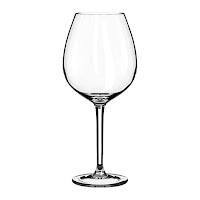The Menu
A menu represents the range of food and beverage items offered in a restaurant. When the menu is represented on a card, it is referred to as the Menu Card. Great pains are taken in compiling the menu card which should not only be attractive but informative and gastrono- mically sound as this reflects the quality of the restaurant, jln a restaurant there are two different types of menus which are differentiated by the manner in which they are priced:
A la carte Menu in which each food item is separately priced in order to give the guest a choice to suit his taste and budget. The choice offered in various courses are many.
Table d’hote Menu in which the entire meal is priced and charged, irrespective of whether the guest has the complete meal or not. Sometimes there are choices of individual courses within a completely priced meal. A restaurant may offer two table d'hote menus where a guest has a choice of a meal.
The classical French menu consists of eleven courses. The number of courses are restricted in modern times to an appetiser, soup, main dish and sweet dish. Coffee may be served after it. A course is a food item eaten at a particular time and sequence during a complete meal.
Separately (adverb)- отдельно
restricted (adjective) - ограниченный
refer (verb) - относить, относиться
sequence (noun) - последовательность
 |
| Menu Table d'hote |
Menu A LA Carte
Distribute copies of the menu card of your restaurant to waiters and explain the following:
1. The various food and beverage items on your menu card.2. The price of various items mentioned in the menu.
3. Briefly how each food item is prepared and how it finally looks when presented to the guest.
4. The garnish and accompaniments of each dish.
A la cart Menu
Table d’hote menu
Grooming
Waiter:
1. Hair should be cut close.
2. The uniform should be spotless and well ironed.
3. A tight or oversized uniform gives a sloppy appearance.
4. Nails should be well manicured and hands absolutely clean.
5. This is important especially since the waiter serves the guest with his hands and is under constant surveillance.
6. Guard against body odours or the smell of cheap perfumes.
7. Shoes should always be polished, and of a conservative style.
8. A close shave is necessary befory entering the restaurant.
9. Stubbles of a bread or moustache could look uncomely
10. Bed breath could be nauseating to a guest sinse the waiter speaks to the guest at close proximity.
Waitress:
1. The apron and hairband should always be clean.
2. High heels could be hazardous during service. Flat shoes with sturdy heels are advisable.
3. Stockings should be clean.
4. Light make-up to project a professional working lady's image is preferred.
5. Excessive jewellery should be avoided.
6. A very strong perfume could nauseate a guest. A fresh light cologne would be preferable.
Dictionary to the text:
Appearance
(noun) - внешний вид
spotless
(adjective) - безупречный
surveillance
(noun) - наблюдение, контроль
stubble
(noun) - щетина
at close proximity - в непосредственной близости
apron
(noun) - передник, фартук
Tablecloths Slipcloth Buffetcloth
Serviettes/NapkinsChinaware
1. Dinner plate
2. Starter plate
3. Soup plate
4. Salad plate
5. Coffee cup
6. Tea cup
7. Coffee Demi-Tasse
8. Tea Pot
Other Chinaware
1. Milk/Cream Jug
2. Coffee pot
3. Sugar pot
4. Butter dishes
5. Ashtray
6. Egg cup
7. Soupe cup
8. Platter

Glassware
2. Red Wine Glass 7 oz

4. Champagne Flute 8 oz

5. White Wine Glass 51/2 oz
6. Brandy Snifter
7. Brandy Balloon 8 oz
11. Beer tankard 1/2 pint
12. Coctail glass 2/3 oz
13. Champagne saucer 6 oz
14. Roly Poly Glass 9 oz
15. Liqueur Glass 6 oz
16. Old Fashioned Glass 9 oz
19. Juice Glass 5 oz

Dictionary to the text:
Chinaware (noun) - фарфоровая посуда
tablecloths (noun)
- скатерть
napkins (noun)
- салфетки
dinner plate
starter plate
sweet plate
side plate
fish plate
soup plate - глубокая тарелка
salad plate
coffee cup- чашка для кофе
tea cup - чашка для чая
Coffee Demi-Tasse
tea Pot - чайник
starter plate
sweet plate
side plate
fish plate
soup plate - глубокая тарелка
salad plate
coffee cup- чашка для кофе
tea cup - чашка для чая
Coffee Demi-Tasse
tea Pot - чайник
milk/cream Jug - молочник
coffee pot - кофейник
sugar pot - сахарница
butter dishes - маслёнка
ashtray - пепельница
egg cup - подставка для яиц
soupe cup - бульоница
platter -
coffee pot - кофейник
sugar pot - сахарница
butter dishes - маслёнка
ashtray - пепельница
egg cup - подставка для яиц
soupe cup - бульоница
platter -
Water Goblet - фужер для воды
Red Wine Glass - бокал для красного вина
Champagne Tulip - фужер для шампанского
White Wine Glass - бокал для белого вина
Brandy Snifter - бокал для бренди
Beer Goblet - бокал для пива
Beer tankard - кружка для пива
Liqueur Glass - рюмка для ликера
Old Fashioned Glass -
Tom Collins Glass -
Hi-ball glass
Juice Glass - стакан для сока
Red Wine Glass - бокал для красного вина
Champagne Tulip - фужер для шампанского
White Wine Glass - бокал для белого вина
Brandy Snifter - бокал для бренди
Beer Goblet - бокал для пива
Beer tankard - кружка для пива
Liqueur Glass - рюмка для ликера
Old Fashioned Glass -
Tom Collins Glass -
Hi-ball glass
Juice Glass - стакан для сока


































Helen, my advise to you: it would be better if the dictionary to the text had a transcription. Would you try to do this?
ОтветитьУдалить